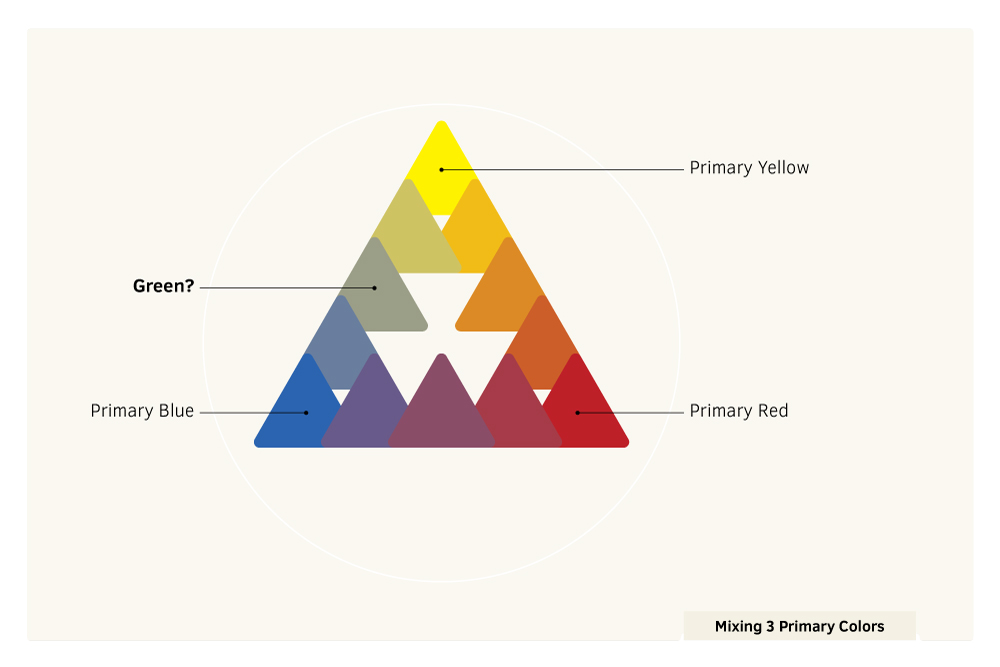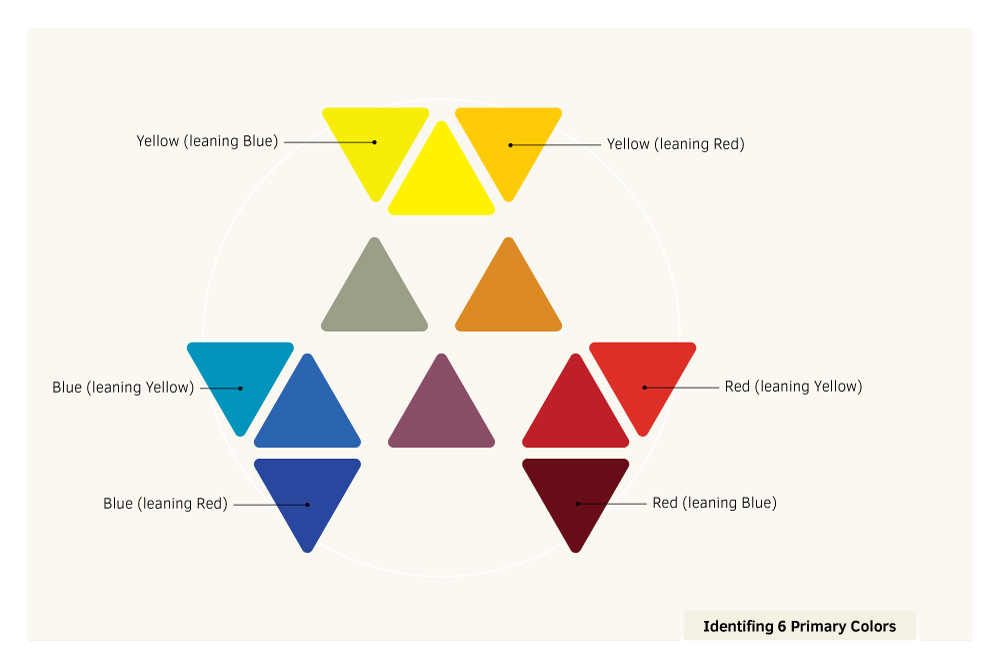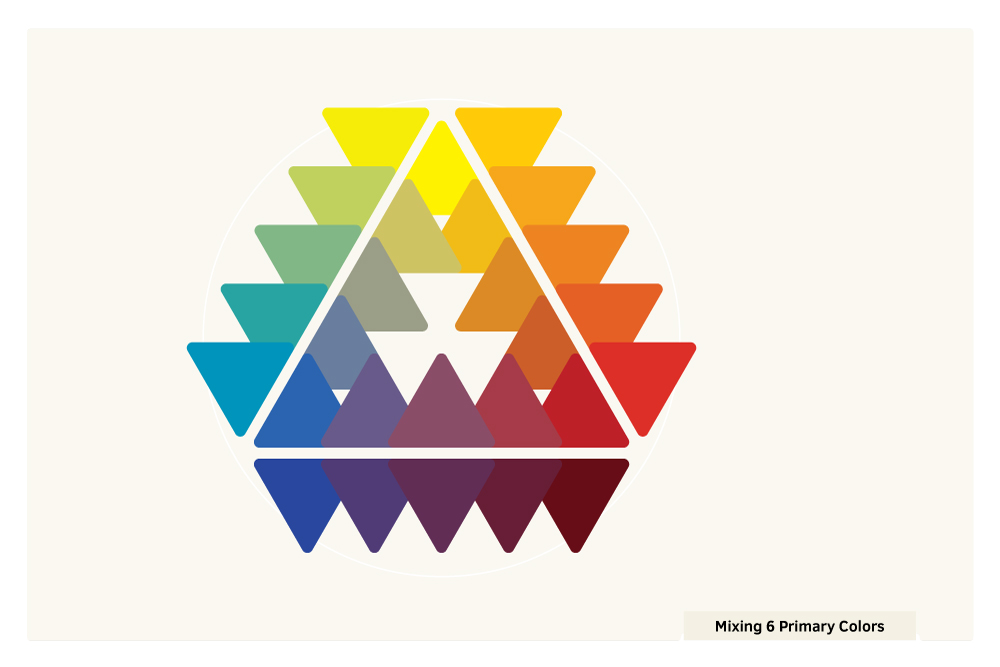Color & Design | Scott E Franson
Color Mixing | Primaries
Mixing Color
In a subtractive color system, Red, Yellow, & Blue are the primary colors. Conventional wisdom teaches that you can create all of the other colors from these three. That isn’t exactly true. Color mixes in a straight line.
Mixing with 3 Primaries

Color mixing using the three primary colors, Red, Yellow, & Blue | Notice the green in this example. It is neutral and low in saturation.
Choosing 6 Primaries

Identifying 6 primary colors. Choose a set for each primary that lean toward the other primary.
Mixing with 6 Primaries

Mixing with 6 primaries produces tertiary colors with more intensity
Mixed up Primaries

Don’t get the primaries mixed up. (Unless that is what you want.) Notice how Blue (+R) and Yellow (+R) does not make green. The red in the blue and yellow add complementary color to the green and it becomes neutral.
Ah Ha Moment
In college I always bought the list of colors that the teacher put on the supply list but I had no idea why the specific colors were picked.
One day in my watercolor class we were on location and I was running out of yellow paint. I rummaged through my paint box looking for yellow and found 2 yellows. I didn’t know which one to choose and so I chose both of them and mixed them together in my palette so that I wouldn’t need to decide again. It was years later until I understood why I needed 2 yellows, 2 blues, and 2 reds.
To get an intense green choose primaries that don’t contain red. Red is the complement to green and it will lower the intensity when mixed together.